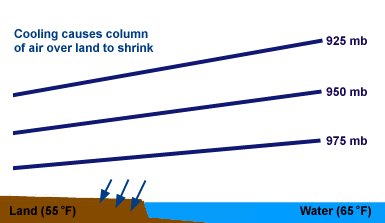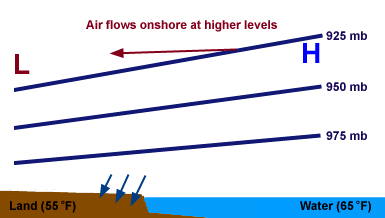Since warm air is less dense than cool air, the air over land contracts in response to radiational cooling from the ground below. This contraction leads to a decrease in the distance, or "thickness", between constant pressure surfaces within the cooled air. Over water, where the air cools much more slowly, such contraction does not occur and the distance between pressure surfaces remains about the same.

In response to additional cooling, an area of low pressure (red "L") develops at higher levels over land while an area of high pressure (blue "H") develops over water.

The resulting pressure gradient force causes air at higher levels to flow onshore (from high to low pressure).

low-level cooling |
|

circulation |